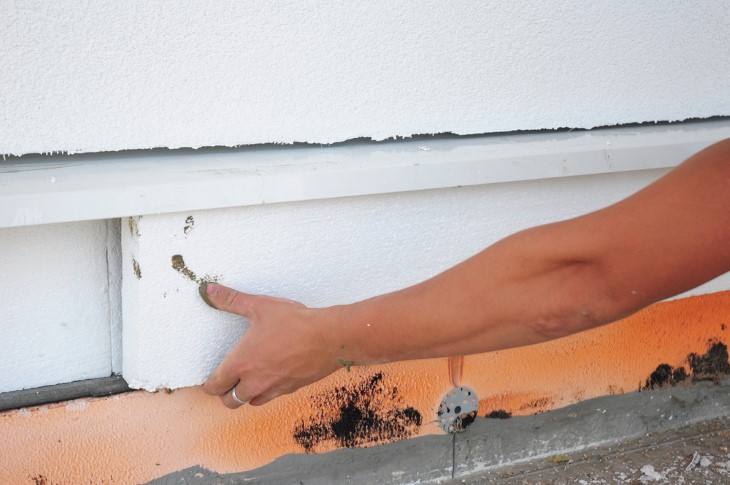
This winter, don't let chilly drafts seep into your home, hiking up your heating costs. These effective remedies range from under $10 solutions to more extensive fixes, all designed to keep you toasty and save energy. The U.S. Department of Energy suggests that draft reduction can lead to annual energy savings of 5 to 30 percent, ensuring a warm, cozy home. In this article, we will look at 10 common and less common solutions to those pesky drafty windows.
1. Identifying Draft Sources
To effectively tackle window drafts, begin by identifying their origins. Feel around your windows for any cold air entering the room. Fogging or condensation on the window glass is a telltale sign of a broken seal, reducing the window's insulating capability. A simple, yet effective, method to pinpoint drafts is using a candle: slowly move its flame around the window frame. Watch for any flickering or bending of the flame, indicating air infiltration. Use a small marker, like a Post-It, to note these drafty spots. After pinpointing all draft sources, sealing these areas with weather sealing tape is a straightforward fix.
Use your hand to feel for cold air around windows. Look for fogging or condensation, which indicates a broken seal. A candle test (moving a lit candle around the frame and watching for flame movements) can help identify less obvious drafts. Once identified, use a non-permanent marker like a Post-It note to mark these spots. This visual aid is helpful when applying the sealing solution.
2. Utilizing Draft Snakes
Draft snakes, also known as draft stoppers, are a simple, yet effective solution for blocking cold air from creeping in through gaps. While commonly used for doors, products like the Home Intuition draft stopper are also excellent for windows. Measuring 36 inches in length and made from fleece with a polyester fill, these snakes fit snugly against the window, forming a barrier against cold air. Their convenient design often includes hanging loops for easy storage when not in use.
3. Installing Storm Windows
Storm windows, such as the Larson aluminum models, are a more substantial investment but offer significant long-term benefits. Mounted on the exterior of your existing windows, they add an extra layer of glass, which greatly enhances insulation and reduces heat loss. While installation can be more labor-intensive compared to simpler methods like weatherstripping, the potential savings on heating and cooling - up to 30 percent, as noted by the U.S. Department of Energy- make them a worthwhile consideration.

4. Using Plastic Shrink Film Insulation Kits
Available at most home improvement stores, plastic shrink film kits like the 3M Indoor Window Insulator Kit are a cost-effective, do-it-yourself approach to window insulation. These kits typically include a clear plastic film and double-sided tape. The film is applied over the window and then heated with a hair dryer to shrink it, creating an airtight seal. This method effectively reduces drafts and improves thermal insulation.
5. Weather Stripping for Sealing Gaps
Weatherstripping is a versatile and affordable method for sealing gaps around windows and doors. Tools like Heavy-Duty Self Adhesive Weatherstrip Seal come in various sizes and are easy to apply. Different materials, such as rubber, felt, or foam, offer varying degrees of insulation and durability. Regular inspection and replacement of weatherstripping can significantly improve a home's energy efficiency.

6. Caulking Window Frames
Caulk is essential for sealing cracks and gaps around window frames, preventing cold air from entering. Over time, caulk can degrade, leading to the formation of small cracks. Inspecting and repairing these cracks is crucial for maintaining insulation. Rope caulk is a user-friendly option for small repairs, while larger gaps may require complete removal and reapplication of caulk. Products like Frost King's rope cord offer an effective solution for these instances.
7. Thermal Curtains for Insulation
Heavy, insulated curtains can be a stylish and effective way to combat window drafts. Options like thermal curtains use multiple layers of fabric to provide insulation, reducing heat loss when the curtains are closed. This approach not only improves energy efficiency but also offers a chance to refresh your room's appearance with new window treatments.
8. Bubble Wrap as a Temporary Fix
For a quick and temporary solution, bubble wrap can be used to insulate windows. Cut to size and secured with double-sided tape, it provides an additional barrier against cold air. While not the most aesthetically pleasing option, it's effective for immediate draft reduction, especially in emergency situations.

9. Sealing Cracks with Clear Nail Polish
Clear nail polish can serve as a temporary fix for small cracks in window panes. Applying it to the crack can prevent further damage and temporarily stop air leaks. While this is not a permanent solution, it can provide short-term relief until more extensive repairs can be made.
10. Cellular Shades
Cellular shades are an attractive and efficient window treatment option. Their unique honeycomb structure creates air pockets that trap warm air inside, providing insulation against cold drafts. Available in various colors and styles, they can complement the room's esthetics while enhancing energy efficiency.

11. Insulating with Styrofoam in Basements
For areas like basements, where esthetics are less of a concern, using Styrofoam board for insulation can be an effective solution. Cut the Styrofoam to fit the window, placing it over the glass to block cold air. This method is especially useful for windows that aren't used frequently or don't need to provide a view.